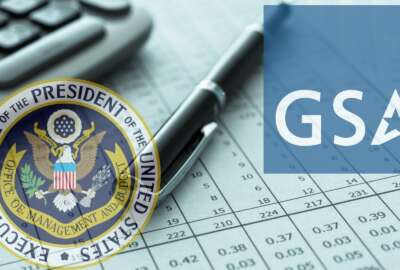
2019 federal pay raise implementation sees light at end of tunnel after months of complexity
As agencies finish implementation of the 2019 retroactive federal pay raise, payroll providers say the past several months of complexity has shown their systems...
Nearly all eligible employees have — at last — received the 2019 federal pay raise retroactive to the beginning of the year.
There are, however, a few select exceptions who are still waiting for their agencies to make manual calculations and changes to their pay, according to the Office of Personnel Management.
“Less than 1% of federal employees across government have not yet received the 2019 retroactive pay raise,” an OPM spokesman told Federal News Network. “This group of employees has unique situations that are causing pay irregularities. This is a high-level priority, and agencies and payroll providers alike are working closely to resolve this issue as soon as possible.”
Less than 1% of the federal workforce equates to roughly 20,000 employees who haven’t yet seen the 2019 raise reflected in their paychecks. Agencies should move the needle further in the coming weeks.
The situation varies depending on each employee and their agency — as well as their organization’s multiple pay, personnel, time and attendance and financial systems. Employees who experienced a change in pay status, such as a promotion, within grade increase or quality step increase, have seen delays in the timing of their raises.
The IRS, which in April had nearly 25,000 employees who would need manual changes before the agency could implement the retroactive federal pay raise, has nearly completed those updates by hand, according to the National Treasury Employees Union.
As of earlier this month, roughly 6,600 IRS bargaining unit employees were still waiting for retroactive portions of the 2019 federal pay raise.
“Today the IRS informed us that they have completed all of the necessary corrections and the last of the adjustments will be paid on or about June 29,” Tony Reardon, NTEU national president, said Monday in a statement to Federal News Network. “The agency has been responsive to our concerns about the delayed payments, and we are grateful that IRS employees will receive the money they are owed in the next few days. NTEU will alert the agency if any other bargaining unit employees are in need of further pay corrections.”
President Donald Trump made the 2019 federal pay raise official with an executive order, which he signed in late March. The EO came more than a month after the President had authorized the retroactive pay raise in the first place, which Congress had included in a shutdown-saving, 2019 spending bill. Employees didn’t begin to receive the new raises until mid April.
A new era for payroll modernization?
Even though much of the federal workforce has been made whole by now, the complexity of processing the retroactive pay adjustments, plus the weeks-long process of implementing back pay for employees impacted by this year’s government shutdown, has kept payroll providers busy over the past six months.
“The unprecedented 35-day government shutdown gave a highlight into some of those complexities to a much larger audience than had been aware of them before,” Michele Singer, director of the Interior Business Center, said last week at an SAP summit in Washington. “We can all share some war stories from earlier this year.”
The IBC has processed all federal pay raise adjustments, a spokesman for the center told Federal News Network.
IBC alone is responsible for paying some 300,000 federal employees under 60 different pay types, Singer said. With each pay type comes its own set of rules regarding time and specific deductions.
That complexity, which the OPM hinted at earlier this spring, has driven payroll providers like the Interior Business Center to more seriously consider how they can modernize their operations under the Trump administration’s NewPay initiative.
“Full and robust development and implementation of New Pay is where we need to be focused,” Singer said. “Improving that is job one. We need to do better. We can do better, but we need to start now. Being fellow civil servants, collaborators and colleagues, as opposed to competitors, puts us in a really unique and positive place where we can make that happen.”
The General Services Administration in September awarded a blanket purchase agreement to two teams of contractors to help move agencies to a modern payroll system.
The Technology Modernization Fund board earlier this year announced GSA would receive a $21.7 million “loan” to accelerate those efforts.
Singer said IBC will submit a new implementation plan that describes how the center could move to one or both of those common platforms under the NewPay initiative.
She raised questions about funding for initiative and cited likely challenges as the administration attempts to standardize and achieve interoperability between multiple existing time and attendance, financial, personnel and security systems.
“That’s going to be a huge hurdle, because if we’re going to standardize more as we move toward New Pay implementation, it’s going to require folks to give up some of their unique systems they have,” she said. “Talking about standardizing in any place where there’s not a statutory or regulatory requirement for the unique offering … [is] easy to say. It’s very hard to do, that change management piece. The collaboration up front needs to be made much more robust, so we’re all in the room together, not having the one-on-one conversations separately.”
The Trump administration hasn’t explicitly said it will cut the current number of payroll providers under NewPay. But as Federal News Network has previously reported, provider consolidation under the initiative may be inevitable.
Singer said IBC, as well as the other payroll providers, needed additional time and personnel to discuss and develop requirements to further NewPay. Payroll provider leadership need to empower the current workforce of federal payroll employees and contractors to participate in the next iteration of NewPay, she said.
“If we think we can just kick it to one agency to do it or kick it to the private sector and say ‘come up with a solution and we’ll flip the switch and make this happen,’ absolutely not,” Singer said. “But if we use the talent and the expertise on board both on our customer end and on our provider end and we do it together, that will be different.”
Copyright © 2024 Federal News Network. All rights reserved. This website is not intended for users located within the European Economic Area.
Nicole Ogrysko is a reporter for Federal News Network focusing on the federal workforce and federal pay and benefits.
Follow @nogryskoWFED
Related Stories





